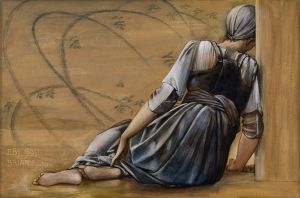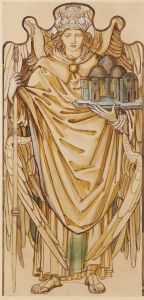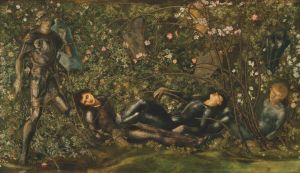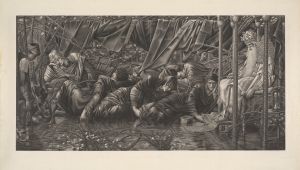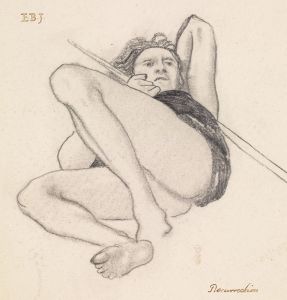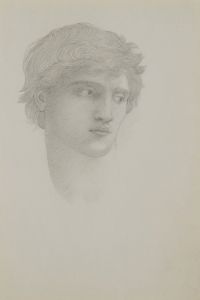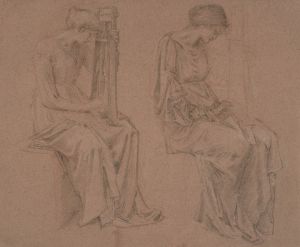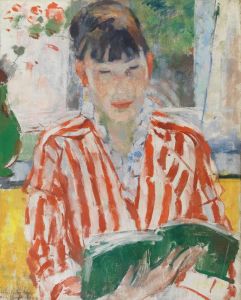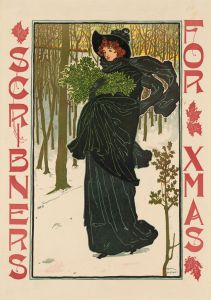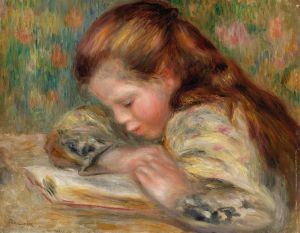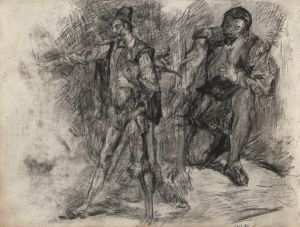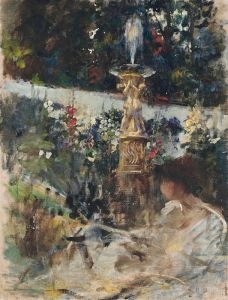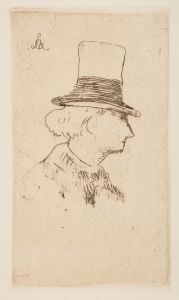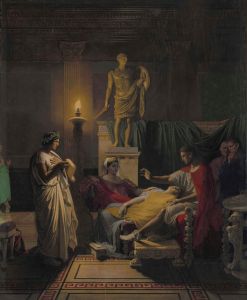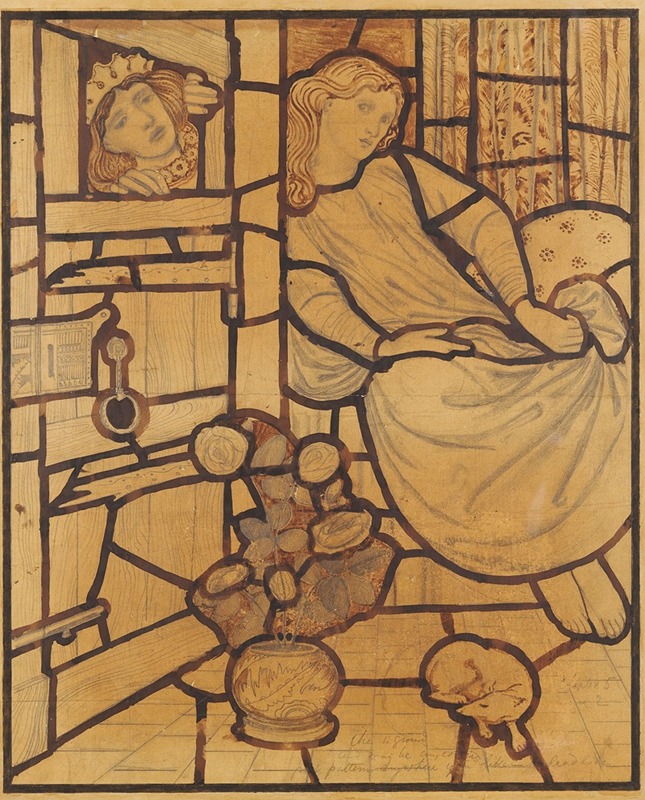
The Song of Solomon
A hand-painted replica of Sir Edward Coley Burne-Jones’s masterpiece The Song of Solomon, meticulously crafted by professional artists to capture the true essence of the original. Each piece is created with museum-quality canvas and rare mineral pigments, carefully painted by experienced artists with delicate brushstrokes and rich, layered colors to perfectly recreate the texture of the original artwork. Unlike machine-printed reproductions, this hand-painted version brings the painting to life, infused with the artist’s emotions and skill in every stroke. Whether for personal collection or home decoration, it instantly elevates the artistic atmosphere of any space.
Sir Edward Coley Burne-Jones, a prominent figure in the Pre-Raphaelite movement, created "The Song of Solomon," a painting that reflects his fascination with medieval themes, romanticism, and biblical narratives. Burne-Jones was known for his intricate and detailed work, often drawing inspiration from literature, mythology, and religious texts. "The Song of Solomon" is one of his works that exemplifies these interests.
The painting is inspired by the biblical "Song of Solomon," also known as the "Song of Songs," which is a series of lyrical poems found in the Old Testament. These poems are traditionally interpreted as an allegorical representation of the love between God and His people, though they are also celebrated for their vivid and sensual imagery of romantic love. Burne-Jones's interpretation of this text captures the ethereal and mystical qualities that are often associated with the Pre-Raphaelite style.
Burne-Jones's "The Song of Solomon" is characterized by its use of rich colors, intricate patterns, and a dreamlike atmosphere. The figures in the painting are typically elongated and graceful, a hallmark of Burne-Jones's style, which often sought to transcend the mundane and evoke a sense of otherworldliness. The artist's attention to detail is evident in the elaborate costumes and backgrounds, which often draw from medieval and Renaissance influences.
The Pre-Raphaelite Brotherhood, of which Burne-Jones was a later associate, aimed to return to the detail, intense colors, and complex compositions of Quattrocento Italian art. They rejected the mechanistic approach that they believed had been adopted by the Mannerist artists who succeeded Raphael and Michelangelo. Burne-Jones, although not an original member, was deeply influenced by these ideals and became one of the most significant figures in the second wave of the movement.
"The Song of Solomon" reflects Burne-Jones's interest in creating art that was both beautiful and meaningful. His works often explore themes of love, beauty, and spirituality, and this painting is no exception. The use of symbolism is prevalent, with elements in the painting often carrying deeper meanings related to the biblical text.
Burne-Jones's work was well-received in his time, and he became a leading figure in the British art scene. His paintings, including "The Song of Solomon," were celebrated for their beauty and their ability to transport viewers to a world of myth and legend. Today, Burne-Jones is regarded as one of the most important artists of the 19th century, and his works continue to be studied and admired for their contribution to the Pre-Raphaelite movement and their enduring aesthetic appeal.
"The Song of Solomon" remains a testament to Burne-Jones's skill and his ability to convey complex themes through his art. The painting is a reflection of his dedication to the ideals of the Pre-Raphaelites and his personal artistic vision, which sought to capture the beauty and mystery of the human experience.





